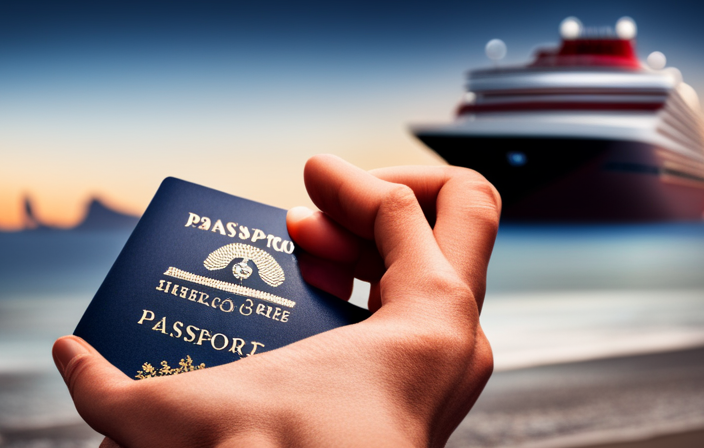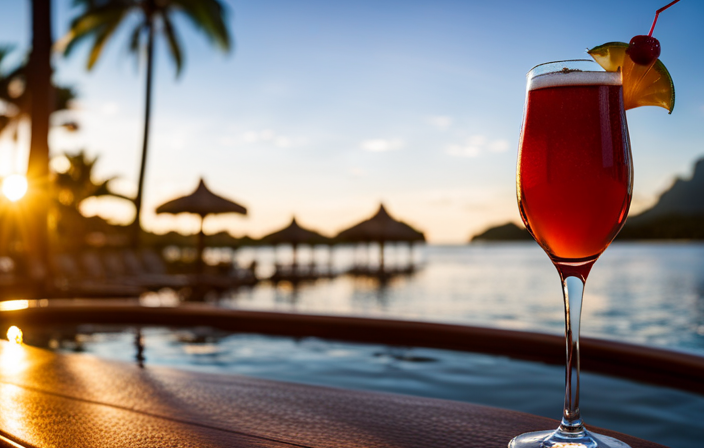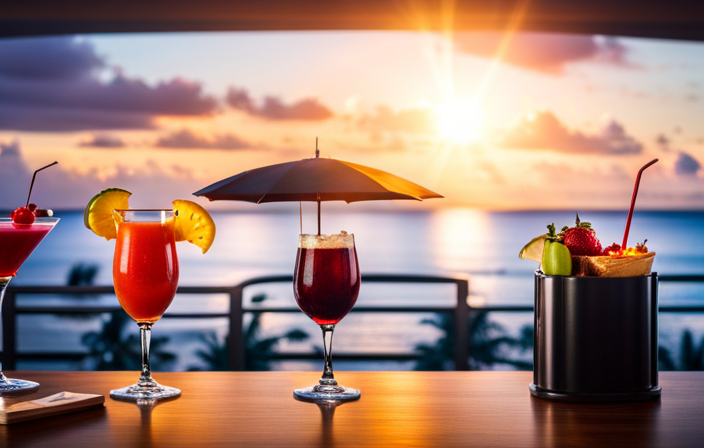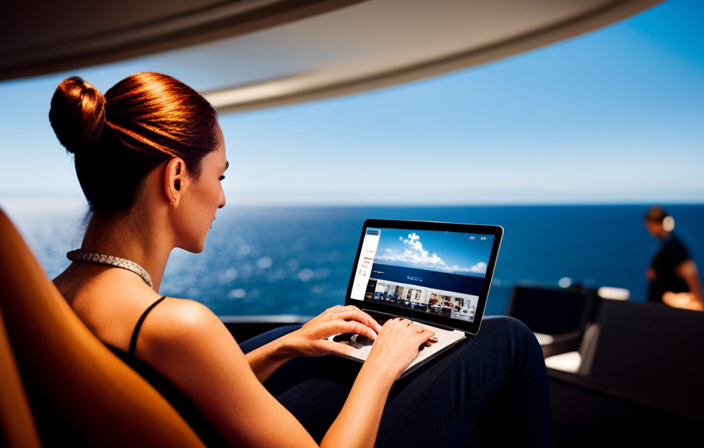Cruise News and Updates
Resurgence of Enthusiasm: Cruise Industry’s Optimistic Future
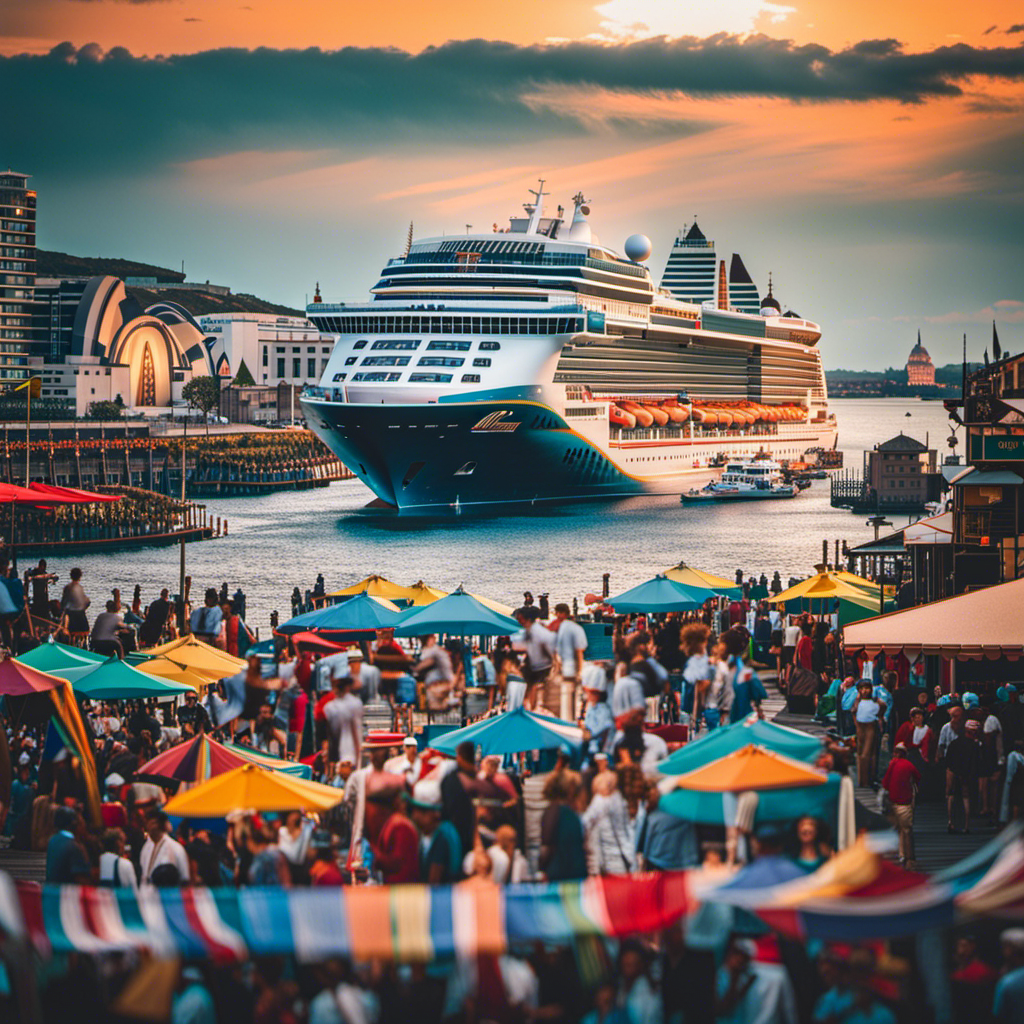
I find myself wondering, considering the recent challenges faced by the cruise industry, what lies ahead for this beloved form of travel?
Well, the good news is that there is a resurgence of enthusiasm for cruising on the horizon. Despite the setbacks caused by the pandemic, the cruise industry is looking optimistically into the future.
Ports like PortMiami, Port Everglades, and Port Canaveral have long been contributing significantly to Florida’s economy, and with enhanced hygiene protocols and enticing pricing, cruising is set to make a triumphant return.
Get ready to set sail once again and experience the vacation of a lifetime.
Key Takeaways
- Cruise industry saw a resurgence of enthusiasm with record-breaking numbers of cruisers in 2019.
- The pandemic had a major impact on the industry, leading to halted operations, loss of employment, and dormant ship investments.
- Enhanced hygiene protocols and increased value, such as historically low pricing and perks, have made cruising even more popular as a vacation option.
- Cruising offers a variety of activities, amenities, and private island escapes, appealing to young professionals and families.
The Growth of Cruise Industry: A Bright Outlook
I’m excited about the bright outlook for the cruise industry and the growth it’s experiencing. The market demand for cruises is expanding, with the industry attracting a growing customer base. Technological advancements are also shaping the future of cruising, making it even more appealing to potential travelers.
The cruise industry has witnessed a surge in popularity, with PortMiami reaching an all-time high of nearly seven million cruisers in 2019. Ports like Port Everglades and Port Canaveral are also contributing significantly to Florida’s economy, with approximately $43 billion being generated annually.
Despite the impact of the pandemic, major players in the industry are confident that cruising will resume with renewed popularity. Cruise lines have used the downtime to implement enhanced hygiene protocols, ensuring that cruising becomes an even safer way to travel. Additionally, historically low pricing and perks like open bar, onboard spending credits, and spa passes have increased the value of cruising, making it a more attractive vacation option.
Overall, the growth of the cruise industry and the technological advancements shaping its future indicate a bright outlook for the industry.
Overcoming Adversity: Cruise Industry’s Resilience
Thriving despite challenges, the cruise industry has displayed remarkable resilience in overcoming adversity.
The impact of the pandemic has been devastating, with major players in the industry halting operations and leaving hundreds of thousands of Americans unemployed. Billions of dollars in ship investments have been left dormant in ports, and a concrete return date is still in limbo.
However, the industry remains optimistic about the future, assured that cruising will resume with renewed popularity. Cruise lines have used this downtime to implement enhanced hygiene protocols, making cruising an even safer way to travel. Additionally, historically low pricing and perks like open bars, onboard spending credits, and spa passes are being offered, reflecting increased value.
The industry’s ability to adapt and overcome challenges is evident, and it is poised to make a remarkable comeback.
Economic Impact: Cruise Industry’s Contribution
Despite the challenges faced by the cruise industry, the economic impact of this sector cannot be underestimated. Here are three key points to consider:
-
Job Creation: The cruise industry is a major contributor to job creation, both directly and indirectly. According to the Cruise Lines International Association (CLIA), the industry supports over 1.1 million jobs worldwide, including positions on cruise ships, as well as in industries such as hospitality, transportation, and manufacturing.
-
Economic Boost: The cruise industry generates significant economic activity in the regions it operates. In the United States alone, the industry contributes billions of dollars to the economy each year. This includes spending on goods and services, port fees, taxes, and tourism-related activities. For example, in Florida, home to major cruise ports such as PortMiami, Port Everglades, and Port Canaveral, the industry contributes approximately $43 billion annually.
-
Supply Chain Impact: The cruise industry has a ripple effect on various sectors of the economy. From food suppliers and logistics companies to entertainment providers and construction firms, the industry creates demand for a wide range of goods and services, benefiting numerous businesses and supporting additional job creation.
Overall, the cruise industry plays a vital role in driving economic growth and providing employment opportunities, making it an important sector to consider in discussions about the economy and job creation.
Navigating Through Uncertainty: Cruise Industry’s Path to Recovery
Navigating through uncertainty, I believe the cruise industry’s path to recovery involves implementing enhanced hygiene protocols and offering increased value to passengers.
The pandemic has had a significant impact on the industry, with major players halting operations and leaving hundreds of thousands of Americans without employment. However, there is optimism for the future of cruising post-pandemic.
Cruise lines are using this downtime to implement enhanced hygiene protocols, ensuring that cruising becomes an even safer way to travel. Additionally, historically low pricing and perks such as open bars, onboard spending credits, and spa passes are being offered to reflect increased value.
The industry is also focusing on providing a variety of activities and amenities on cruises, appealing to young professionals and families.
With these recovery strategies in place, the future of cruising post-pandemic looks promising as a celebration of renewal and better days ahead.
Reinventing the Cruise Experience: Enhanced Hygiene and Value
I believe that implementing enhanced hygiene protocols and offering increased value to passengers is crucial in reinventing the cruise experience.
The cruise industry has recognized the need to reimagine cleanliness, affordability, and safety in order to regain the trust and confidence of travelers. Cruise lines have been using their downtime to implement enhanced hygiene protocols, ensuring that ships are thoroughly cleaned and sanitized. This includes more frequent cleaning of high-touch surfaces, implementing hand sanitizing stations throughout the ship, and enforcing social distancing measures.
In addition to these measures, cruise lines are also offering historically low pricing and perks to reflect increased value for passengers. Benefits like open bar, onboard spending credits, and spa passes are being provided to enhance the overall experience.
Endless Entertainment: Activities and Amenities on Cruise Ships
Passengers can enjoy a wide variety of activities and amenities on cruise ships. These unforgettable experiences are designed to create lasting memories for guests. Here are some of the amazing activities and amenities offered on cruise ships:
- Exciting water slides and wave pools for a thrilling splash-filled adventure
- State-of-the-art fitness centers equipped with modern exercise equipment and fitness classes
- Luxurious spas offering rejuvenating treatments and relaxation areas with stunning ocean views
In addition to these activities, cruise ships also provide lavish entertainment options such as Broadway-style shows, live music performances, and comedy clubs. Guests can indulge in gourmet dining experiences at a variety of restaurants and enjoy world-class shopping onboard. The cruise industry continuously strives to enhance the experience for passengers, ensuring that each voyage is filled with unforgettable moments and endless entertainment.
Paradise on the High Seas: Private Island Escapes
Exploring private island escapes on a cruise ship offers a unique opportunity to indulge in pristine beaches, turquoise waters, and exclusive experiences. These private island destinations, carefully selected by cruise lines, provide a luxurious and secluded beachfront experience for passengers.
With their own slice of paradise, travelers can bask in the sun and enjoy the crystal-clear waters without the crowds typically found on public beaches. These private islands boast a range of amenities, including beachside cabanas, water sports activities, and gourmet dining options. Passengers can also partake in exclusive experiences such as snorkeling with marine life or exploring nature trails.
The allure of these private island escapes lies in their exclusivity and the luxury beachfront experiences they offer, making them a must-visit destination for cruise enthusiasts seeking a true paradise getaway.
Anticipating the Return: Cruising as a Symbol of Hope
Anticipating the return of cruising fills me with hope for brighter days ahead. As a symbol of hope, cruising holds a significant place in the hearts of many. It represents a sense of freedom, adventure, and escape from the monotony of everyday life.
Here are four reasons why the return of cruising holds such symbolic significance and emotional connection:
-
Reuniting with the sea: For those who have missed the soothing sound of the waves and the vastness of the ocean, cruising offers a chance to reconnect with nature and find solace in its beauty.
-
Renewed sense of community: Cruising brings people together from all walks of life, fostering new friendships and creating lasting memories. After a period of isolation, the return of cruising will be a celebration of reuniting with loved ones and meeting new people.
-
Exploration and adventure: Cruising allows us to explore new destinations, experience different cultures, and embark on thrilling excursions. The anticipation of discovering new places and immersing ourselves in unique experiences adds to the emotional connection we have with cruising.
-
Optimism for the future: The return of cruising signifies a brighter future ahead. It represents the resilience of the industry and the human spirit. As we step on board once again, we embrace the hope that better days are on the horizon, filled with joy, relaxation, and a renewed appreciation for the world around us.
The return of cruising carries a symbolic significance that goes beyond mere travel. It represents a beacon of hope, reminding us that there is light at the end of the tunnel and that brighter days are ahead.
A New Era of Cruising: Attracting Young Professionals and Families
As we anticipate the return of cruising, it’s exciting to envision the new era that awaits us. One aspect of this new era is the cruise industry’s efforts to attract young professionals and families. Cruise lines are reimagining itineraries and creating innovative onboard experiences to cater to these demographics.
To give you a glimpse of what’s in store, take a look at the table below:
| Reimagined Itineraries | Innovative Onboard Experiences |
|---|---|
| Longer stays in ports | Virtual reality gaming zones |
| Off-the-beaten-path destinations | Culinary experiences with celebrity chefs |
| Cultural immersion activities | Family-friendly shows and entertainment |
These enhancements aim to provide a well-rounded vacation experience for young professionals and families. By offering unique destinations and a range of activities, the cruise industry is ensuring that everyone can find something to enjoy. Whether it’s exploring new cultures or indulging in exciting entertainment options, the new era of cruising promises to be unforgettable.
Embracing the Future: Cruise Industry’s Promising Horizons
I’m excited about the promising horizons of the cruise industry and the potential it holds for a bright future. One key aspect that is driving this positive outlook is the industry’s embrace of innovative technology.
The cruise industry is undergoing a digital transformation, incorporating advanced technologies to enhance the guest experience. From smart ship features that allow passengers to easily navigate and access onboard services, to virtual reality experiences that transport guests to new destinations without leaving the ship, these technological advancements are revolutionizing the cruising experience.
Another important aspect is the industry’s commitment to sustainable cruising and environmental stewardship. Cruise lines are investing in eco-friendly initiatives to minimize their environmental impact. This includes reducing emissions, implementing advanced waste management systems, and using alternative energy sources. Additionally, cruise lines are partnering with local communities and organizations to protect marine ecosystems and preserve natural resources.
Through the combination of innovative technology and a strong commitment to sustainable cruising, the cruise industry is poised for a promising future. Passengers can look forward to an increasingly immersive and environmentally responsible cruising experience.
Frequently Asked Questions
What Are Some of the Enhanced Hygiene Protocols That Cruise Lines Are Implementing During the Pandemic?
Cruise lines’ safety measures include enhanced hygiene protocols like increased cleaning and sanitization, mandatory handwashing, and temperature screenings. These measures aim to ensure a safe and healthy environment for passengers and crew during the pandemic.
How Have Cruise Prices and Perks Changed During This Time of Uncertainty?
Cruise prices have dropped significantly during this uncertain time, with historically low pricing and added perks like open bars and onboard spending credits. It’s a great time to book a cruise and enjoy a vacation of a lifetime.
What Are Some of the Unique Activities and Amenities Offered on Cruise Ships?
On cruise ships, you can enjoy adventure sports like go-kart racing and rock climbing. The culinary experiences are also top-notch, with gourmet dining and lavish entertainment in spectacular theaters.
Which Cruise Lines Have Private Island Escapes as Part of Their Itineraries?
Cruise lines like Royal Caribbean and MSC Cruises offer private island escapes as part of their itineraries, providing hidden gems for passengers to explore. These sustainable initiatives offer eco-friendly experiences on cruise vacations.
How Is the Cruise Industry Attracting Young Professionals and Families?
Cruising attracts young professionals and families with a variety of activities and entertainment options. From go-kart racing to gourmet dining, there’s something for everyone. It’s ironic how cruising, once seen as traditional, now appeals to a younger audience.
Conclusion
In conclusion, the cruise industry is poised for a promising future despite the challenges it has faced.
With a record high number of cruisers in 2019 and significant contributions to Florida’s economy, the industry has proven its resilience.
Through enhanced hygiene protocols and attractive pricing, cruise lines are working towards a safe and valuable experience for travelers.
A case study of a hypothetical young professional who, after experiencing the enhanced hygiene measures and value offered by a cruise line, becomes a loyal cruiser, exemplifies the industry’s potential for growth.
The cruise industry’s ability to adapt and embrace the future ensures a bright horizon ahead.
Meet Asra, a talented and adventurous writer who infuses her passion for exploration into every word she writes. Asra’s love for storytelling and her insatiable curiosity about the world make her an invaluable asset to the Voyager Info team.
From a young age, Asra was drawn to the power of words and their ability to transport readers to far-off lands and magical realms. Her fascination with travel and cultures from around the globe fueled her desire to become a travel writer, and she set out on a journey to turn her dreams into reality.
Cruise News and Updates
Safely Experience And Support The Future Of Cruises In 2021
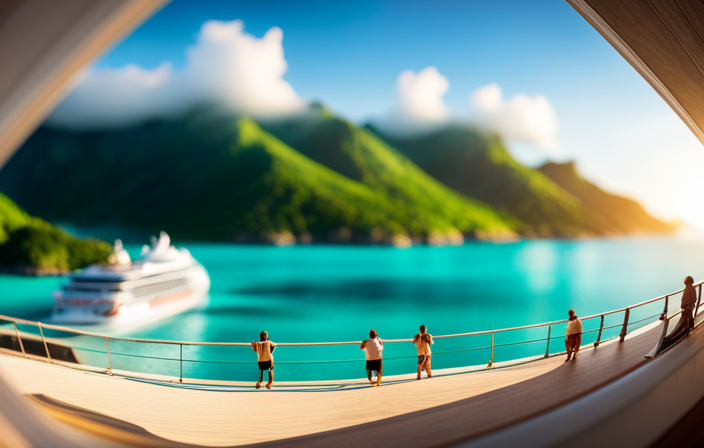
Howdy! While we make our way through the unpredictable challenges brought on by the global health crisis, the cruise industry is undoubtedly one of the hardest hit sectors. However, do not despair, fellow journey-seekers, as it appears that there is a glimmer of hope on the horizon!
In this article, we will delve into the exciting world of cruises in 2021 and explore how we can safely experience and support their future.
Like a sturdy anchor, the Centers for Disease Control and Prevention (CDC) has laid out requirements for test cruise volunteers, ensuring that we set sail with utmost caution. These requirements include being 18 years or older, fully vaccinated against COVID-19 or having no high-risk medical conditions, and agreeing to COVID-19 testing. These test cruises serve as a simulation, allowing cruise lines to fine-tune their operations and ensure the safety of both crew and passengers.
So, grab your life jackets and join me as we embark on a journey to discover the ins and outs of these test cruises. From embarkation to dining, entertainment to medical evacuation procedures, we will explore it all.
Let’s set sail and support the future of cruises in 2021!
Key Takeaways
- CDC requirements for test cruise volunteers include being 18 years or older, fully vaccinated against COVID-19 or having no high-risk medical conditions, and undergoing COVID-19 symptom evaluations before embarkation and disembarkation.
- The purpose of test cruises is to ensure safe operation during the global health crisis and simulate the passenger experience.
- Test cruises must be at least 2-7 days in duration with at least one overnight stay, and the CDC recommends a minimum voyage length of 3 days with 2 overnight stays.
- Simulated activities on test cruises include embarkation and disembarkation procedures, dining, entertainment, and medical evacuation procedures, isolation and quarantine measures, and protocols for recreational activities and shore excursions.
What is it?
I’ll explain what a test cruise is in 2021. A test cruise is a simulated voyage that cruise lines conduct to ensure safe operation despite the global health crisis. These cruises serve to test and evaluate the implementation of safety measures and protocols.
The purpose is to simulate the passenger experience and identify any areas that may need improvement. Test cruises typically last between 2-7 days, with at least one overnight stay. Safety is of utmost importance, and all volunteers must adhere to CDC requirements, such as being fully vaccinated against COVID-19 and undergoing pre and post-disembarkation COVID-19 testing.
While test cruises are not paid and cannot be part of employment conditions, volunteers have the opportunity to support the future of the cruise industry and contribute to the development of enhanced safety protocols.
Requirements for Volunteers
To volunteer for a test cruise in 2021, I must meet the CDC requirements, including being fully vaccinated against COVID-19 or having no high-risk medical conditions, and I must be willing to undergo COVID-19 testing before and after the cruise.
The evaluation process for volunteers will involve assessing their vaccination status and checking for any COVID-19 symptoms before embarkation and disembarkation.
The purpose of this evaluation is to ensure the safety of all participants and to simulate a real passenger experience. It is crucial for volunteers to comply with these requirements in order to support the future of cruises in 2021 and to help the industry operate safely amidst the global health crisis.
By following these guidelines, we can contribute to the development of effective protocols and measures that will allow cruise ships to resume operations in a responsible manner.
Test Cruise Details
The test cruises will have a duration of 2-7 days and will include at least one overnight stay. These cruises are designed to simulate the passenger experience and ensure safe operation despite the ongoing global health crisis. During the test cruises, various activities will be simulated, including embarkation and disembarkation procedures, dining, entertainment, and medical evacuation protocols.
Additionally, there will be simulated recreational activities such as casinos and spa services, as well as protocols for private-island and port of call shore excursions.
As for the sign-up process and selection for test cruises, currently, only Royal Caribbean has provided a sign-up form for volunteers. In the first week, they received 100,000 signatures. However, there haven’t been any announcements or updates regarding sign-up methods from Norwegian, Carnival, MSC, and Disney. The volunteer selection process for test cruises hasn’t been disclosed at this time.
Frequently Asked Questions
Can I bring my own food and beverages on a test cruise?
On a test cruise, passengers are not allowed to bring their own food and beverages. The cruise line provides all meals and drinks as part of the simulated passenger experience. Dietary restrictions can be accommodated upon request.
Will test cruise volunteers have access to all onboard amenities and services?
Test cruise volunteers are expected to have access to all onboard amenities and services. However, it is important to note that volunteers are not compensated for their participation in the test cruises.
Are there any restrictions on the number of passengers allowed on a test cruise?
Passenger capacity limits for test cruises are determined by the CDC. However, cruise lines that require vaccinations for passengers can bypass test cruises. Vaccination requirements are in place to ensure the safety of all participants.
How often will test cruises be conducted in 2021?
Test cruises will be conducted multiple times in 2021 as part of the cruise industry recovery and to ensure health and safety measures. The exact frequency of test cruises has not been specified.
Will test cruise volunteers be compensated in any way for their participation?
Test cruise volunteers will not be compensated for their participation. However, they will benefit from the opportunity to experience a simulated cruise, contribute to the safe operation of cruises, and help shape the future of the industry.
Claire, a creative soul with an unquenchable thirst for storytelling, is an integral part of the Voyager Info team. As a dedicated writer, she weaves captivating narratives that transport readers to enchanting cruise destinations and beyond.
Claire’s love affair with writing began at an early age when she discovered the magic of words and their ability to craft worlds and emotions. Her innate curiosity led her to explore various literary genres, but it was travel writing that truly captured her heart. Drawing inspiration from her own globetrotting adventures and encounters with diverse cultures, Claire embarked on a journey to become a travel writer par excellence.
Cruise News and Updates
How Cruise Ships Operate: Profits, Strategies, And Continuous Operation
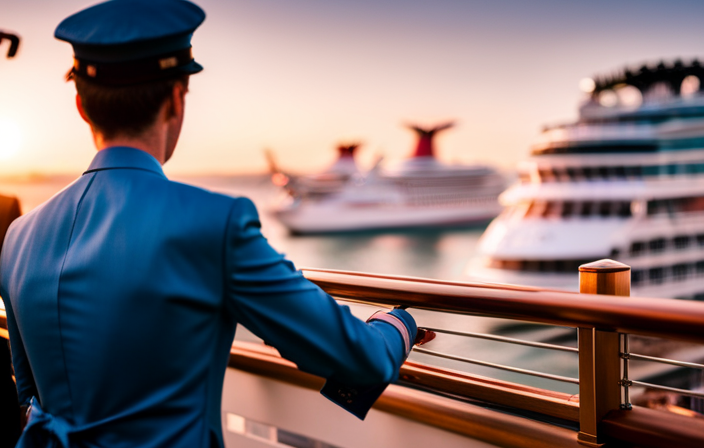
Hello! We are excited to invite you to explore the captivating world of cruise ships and learn about how they operate.
Picture this: cruise ships, those floating paradises on the sea, are not only about providing unforgettable vacations but also about generating impressive profits. In this article, we’ll explore the strategies and continuous operation that keep these magnificent vessels afloat financially.
Did you know that ticket prices for mainstream cruise lines average around $1,293? But that’s just the beginning. Additional onboard spending can add up to a whopping $429 per passenger. From casinos to spas, shopping to dining, and everything in between, cruise lines have cleverly designed their ships to maximize revenue from various sources.
But it doesn’t stop there. We’ll also uncover the secrets behind the ownership and categorization of cruise lines. From Carnival Corporation to Royal Caribbean Group and Norwegian Cruise Line Holdings, these three corporations dominate the industry with their multiple brands.
So, fasten your seatbelts (or life jackets) and get ready to embark on a journey through the intriguing world of cruise ship operations.
Let’s set sail!
Key Takeaways
- Cruise ship ticket prices include both the base fare and additional onboard spending, such as casinos, spas, shopping, dining, Wi-Fi, and drinks.
- Main sources of profit for cruise lines are casinos, spas, shopping, dining, Wi-Fi, and drinks.
- Placement of common areas like lounges, bars, and casinos strategically along passenger routes helps generate more revenue.
- Cruise lines employ various profit-making strategies, such as making most of the money upfront for premium cruise lines and catering to passengers who spend more time in ports for luxury cruise lines.
How They Make Money
I make money by offering various sources of entertainment and amenities on board, such as casinos, spas, shopping, dining, Wi-Fi, and drinks. These are the key sources of profit for cruise lines. Onboard revenue sources are crucial in generating income for the company.
Passengers spend money on these amenities and entertainment options, contributing to the overall profitability of the cruise line. Additionally, we generate revenue through passenger spending on private islands. By leasing private islands from foreign countries, we provide passengers with unique experiences, such as complimentary beach chairs and BBQ lunches. This not only enhances their vacation but also increases their spending on the island.
These onboard revenue sources and passenger spending on private islands play a significant role in ensuring the financial success of the cruise line.
Continuous Operation Process
Year-round, cruise liners tirelessly navigate the seas, seamlessly switching regions during repositioning cruises, and swiftly preparing for the next voyage on turnaround day. Crew management plays a crucial role in ensuring continuous operation. Cruise lines hire crew members from foreign countries, allowing them to save costs while maintaining a diverse and efficient workforce. These crew members work tirelessly to provide exceptional service to passengers, ensuring their comfort and satisfaction throughout the voyage.
Repositioning cruises are another aspect of continuous operation. These cruises occur when ships move from one region to another, often during seasonal changes. During repositioning cruises, cruise lines take the opportunity to offer unique itineraries and experiences to passengers. This allows them to generate additional income while optimizing the usage of their fleet.
Incorporating a 3 column and 5 row table:
| Continuous Operation Process | |
|---|---|
| Year-round operation | Without breaks |
| Repositioning cruises | Ships switch regions |
| Turnaround day | Quick disembarkation and preparation for the next cruise |
| Crew management | Hiring crew members from foreign countries |
| Additional income | Visiting multiple ports |
Ownership and Categorization
Carnival Corporation, Royal Caribbean Group, and Norwegian Cruise Line Holdings are the three corporations that own multiple cruise line brands. These corporations have a complex ownership structure, with each owning several cruise lines that cater to different market segments.
Carnival Corporation, for example, owns popular mainstream brands such as Carnival Cruise Line and Princess Cruises, while Royal Caribbean Group owns premium brands like Royal Caribbean International and Celebrity Cruises. Norwegian Cruise Line Holdings, on the other hand, owns Norwegian Cruise Line, which falls into the mainstream category.
Differentiation factors play a crucial role in the ownership structure. Each corporation strategically positions its cruise line brands to cater to different types of passengers. This allows them to capture a wider market share and maximize profits.
From mainstream to luxury, these corporations have created a diverse range of cruise lines that offer unique experiences and amenities. By offering different levels of service, accommodations, and onboard activities, they are able to attract and retain passengers with varying preferences and budgets.
The ownership and categorization of cruise line brands play a significant role in the overall profitability and success of these corporations.
Frequently Asked Questions
How do cruise ships handle medical emergencies and provide medical care to passengers on board?
Cruise ship medical facilities are equipped to handle medical emergencies. The crew receives emergency response training, and medical personnel are available on board. Passengers can receive medical care and treatments while at sea.
What safety measures are in place to prevent accidents or incidents on cruise ships?
Cruise ship safety measures include thorough training for crew members, regular safety drills, strict adherence to international safety regulations, advanced navigation systems, surveillance cameras, and emergency response protocols to prevent accidents and incidents onboard.
How do cruise ships handle waste management and environmental sustainability?
Ah, waste management and environmental sustainability, the unsung heroes of cruising. Cruise ships tackle these challenges through advanced waste treatment systems, recycling programs, and energy-efficient technologies, ensuring a greener voyage for all.
What is the process for hiring and training crew members on cruise ships?
The hiring process for crew members on cruise ships involves recruiting from foreign countries, conducting interviews and background checks, and providing training in various areas such as safety, customer service, and emergency procedures.
How do cruise ships handle security and ensure the safety of passengers and their belongings?
Cruise ship security is a top priority, ensuring passenger safety and protecting their belongings. Vigilant surveillance systems, trained security staff, and strict access control measures are implemented to prevent incidents and swiftly respond to emergencies.
Claire, a creative soul with an unquenchable thirst for storytelling, is an integral part of the Voyager Info team. As a dedicated writer, she weaves captivating narratives that transport readers to enchanting cruise destinations and beyond.
Claire’s love affair with writing began at an early age when she discovered the magic of words and their ability to craft worlds and emotions. Her innate curiosity led her to explore various literary genres, but it was travel writing that truly captured her heart. Drawing inspiration from her own globetrotting adventures and encounters with diverse cultures, Claire embarked on a journey to become a travel writer par excellence.
Cruise News and Updates
The Fascinating World Of Cruise Ships: Size, Power, And Environmental Impact
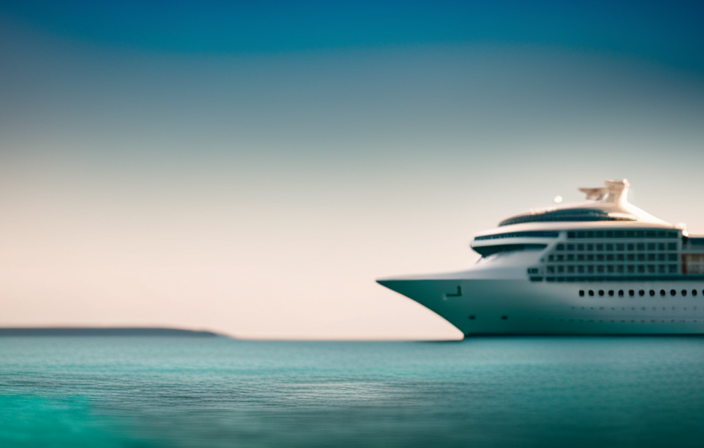
Oh, the world of cruise ships. It’s a mesmerizing realm, filled with magnificent vessels sailing the vast oceans, taking passengers to distant, enchanting locations.
The sheer size and power of these floating marvels never fail to astound me. From their towering lengths, ranging from 900 to 1,100 feet, to their impressive fuel tanks, holding a staggering 1 to 2 million gallons of fuel, cruise ships are a testament to human engineering. Some even harness the energy of liquefied natural gas, with engines so colossal they could fill a room. It’s truly awe-inspiring.
Yet, amidst this marvel, we must also consider the environmental impact. Many cruise lines still rely on diesel-powered engines, but the use of LNG reduces carbon emissions by a significant 30%.
As a passionate traveler and writer, I am eager to delve into the fascinating world of cruise ships, exploring their size, power, and environmental impact. Join me as we embark on this journey of discovery and exploration.
Key Takeaways
- Cruise ships are massive vessels that can range in length from 900 to 1,100 feet.
- Some cruise ships use liquefied natural gas (LNG) as fuel, reducing carbon emissions by 30%.
- The environmental impact of cruise ships, particularly diesel-powered engines, is a concern and contributes to air pollution and climate change.
- The adoption of sustainable cruise practices, including the use of LNG fuel, is crucial for a more sustainable future and to mitigate the environmental impact of cruise ships.
Cruise Ship Specifications
Cruise ship specifications are an important aspect to consider when understanding their size, power, and environmental impact. These massive vessels can range in length from 900 to 1,100 feet, accommodating thousands of passengers and crew members.
Fuel consumption is a significant consideration, with cruise ships typically carrying 1-2 million gallons of fuel in their tanks. Some ships are now incorporating LNG tanks, which reduce carbon emissions by 30%.
The shipbuilding process is a complex endeavor, with engines playing a crucial role in powering these floating cities. Cruise ships are equipped with 4-6 engines, each generating an impressive 18.5 megawatts of power. These engines, measuring up to 45 feet in length and 27 feet in height, propel the ship at an average speed of 18-22 knots.
Additionally, cruise ships are equipped with two anchors weighing 10-20 tons each, ensuring stability while at port.
Engine and Power Details
When it comes to engine and power details, it’s important to consider the environmental impact and the need for alternative fuel sources.
Cruise ship propulsion plays a crucial role in determining the ship’s fuel efficiency and carbon emissions. Most cruise ships are equipped with 4-6 engines, each generating 18.5 megawatts of power. These engines can measure up to 45 feet in length and 27 feet in height.
While many cruise lines still rely on diesel-powered engines, there is a growing shift towards using liquefied natural gas (LNG) as a more environmentally friendly fuel source. LNG-powered ships can reduce carbon emissions by up to 30%.
As the cruise industry continues to evolve, it’s crucial for shipbuilders and operators to prioritize fuel efficiency and explore sustainable propulsion options to minimize their environmental impact.
Environmental Impact
As an enthusiast of the cruise industry, I am deeply concerned about the ecological consequences of traditional diesel-powered engines commonly used on cruise ships. Cruise ship emissions have a significant impact on the environment, contributing to air pollution and climate change. However, there are sustainable cruise practices being implemented to address these concerns. One such practice is the use of LNG-powered fuel, which reduces carbon emissions by 30% compared to diesel. This is a positive step towards minimizing the environmental impact of cruise ships.
To visualize this information, here is a table highlighting the environmental impact of cruise ship emissions:
| Environmental Impact | Consequences |
|---|---|
| Air pollution | Increased respiratory |
| problems | |
| Climate change | Rising sea levels |
| and extreme weather |
By adopting sustainable cruise practices and transitioning to cleaner fuel sources like LNG, cruise ships can help mitigate their environmental footprint and contribute to a more sustainable future.
Frequently Asked Questions
What are some popular destinations for cruise ships?
Top rated cruise ship destinations include the Caribbean, Mediterranean, Alaska, and the Baltic Sea. These locations offer stunning scenery, cultural experiences, and a variety of activities. The cruise industry is adopting eco-friendly practices to reduce its environmental impact.
How many passengers can a typical cruise ship accommodate?
A typical cruise ship can accommodate thousands of passengers, resembling a floating city. With various cruise ship designs catering to different market segments, the cruise ship market continues to evolve to meet the needs of travelers worldwide.
What are some unique amenities or features found on modern cruise ships?
Luxury accommodations and innovative dining experiences are some unique amenities found on modern cruise ships. Passengers can enjoy spacious suites, private balconies, gourmet restaurants, and specialty dining options that cater to various tastes and dietary preferences.
How do cruise ship companies ensure the safety and security of their passengers?
Cruise ship companies ensure the safety and security of their passengers through various measures. They have well-equipped medical facilities onboard and conduct regular emergency drills to prepare passengers for any potential emergencies that may arise during their voyage.
What are some common activities or entertainment options available on cruise ships?
Cruise ships offer a wide range of activities and entertainment options. From gourmet dining experiences to luxurious onboard spa and wellness facilities, passengers can indulge in relaxation and enjoy a variety of amenities during their cruise vacation.
Claire, a creative soul with an unquenchable thirst for storytelling, is an integral part of the Voyager Info team. As a dedicated writer, she weaves captivating narratives that transport readers to enchanting cruise destinations and beyond.
Claire’s love affair with writing began at an early age when she discovered the magic of words and their ability to craft worlds and emotions. Her innate curiosity led her to explore various literary genres, but it was travel writing that truly captured her heart. Drawing inspiration from her own globetrotting adventures and encounters with diverse cultures, Claire embarked on a journey to become a travel writer par excellence.
-

 Cruise FAQs3 days ago
Cruise FAQs3 days agoHow To Turn On Cruise Control Tesla Model 3
-

 Cruise FAQs3 months ago
Cruise FAQs3 months agoWhat Is The Weather Like On A Transatlantic Cruise In April
-

 Cruise FAQs3 days ago
Cruise FAQs3 days agoHow To Set Cruise Control Tesla Model Y
-

 Cruise FAQs3 months ago
Cruise FAQs3 months agoHow to Contact Someone on a Carnival Cruise Ship
-
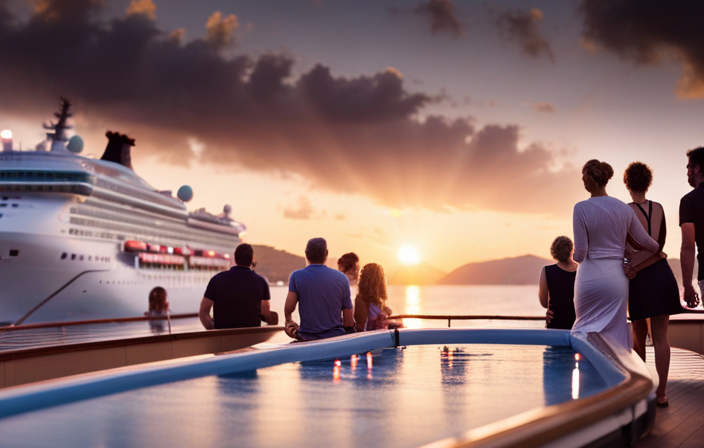
 Cruise Lines3 months ago
Cruise Lines3 months agoWhat Is The Average Age Of Passengers By Cruise Line
-

 Onboard Experience1 week ago
Onboard Experience1 week agoFinding Deals On Unsold Cruise Cabins: Tips And Strategies
-
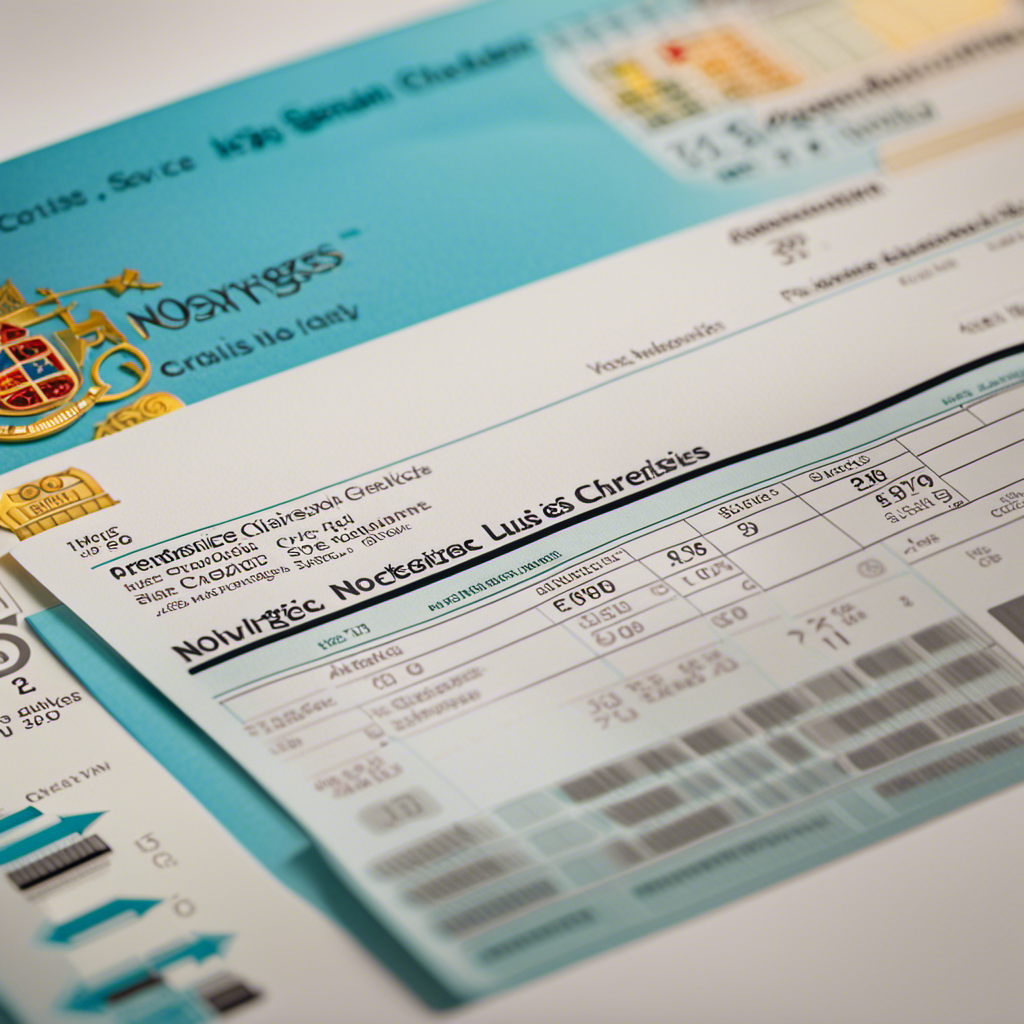
 Cruise Lines3 months ago
Cruise Lines3 months agoDecoding Norwegian Cruise Line’s Gratuities and Service Charges
-
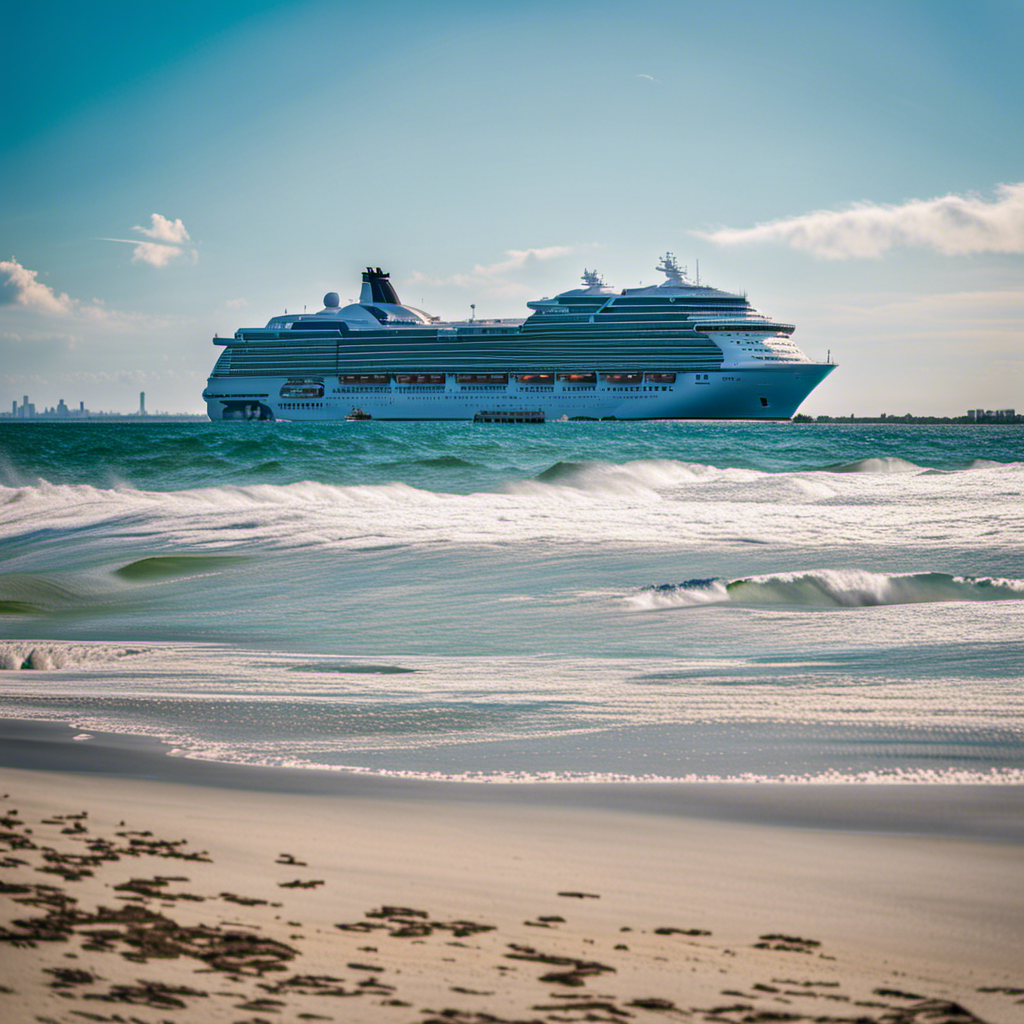
 Cruise Lines3 months ago
Cruise Lines3 months agoWhat Cruise Lines Depart From North Carolina








